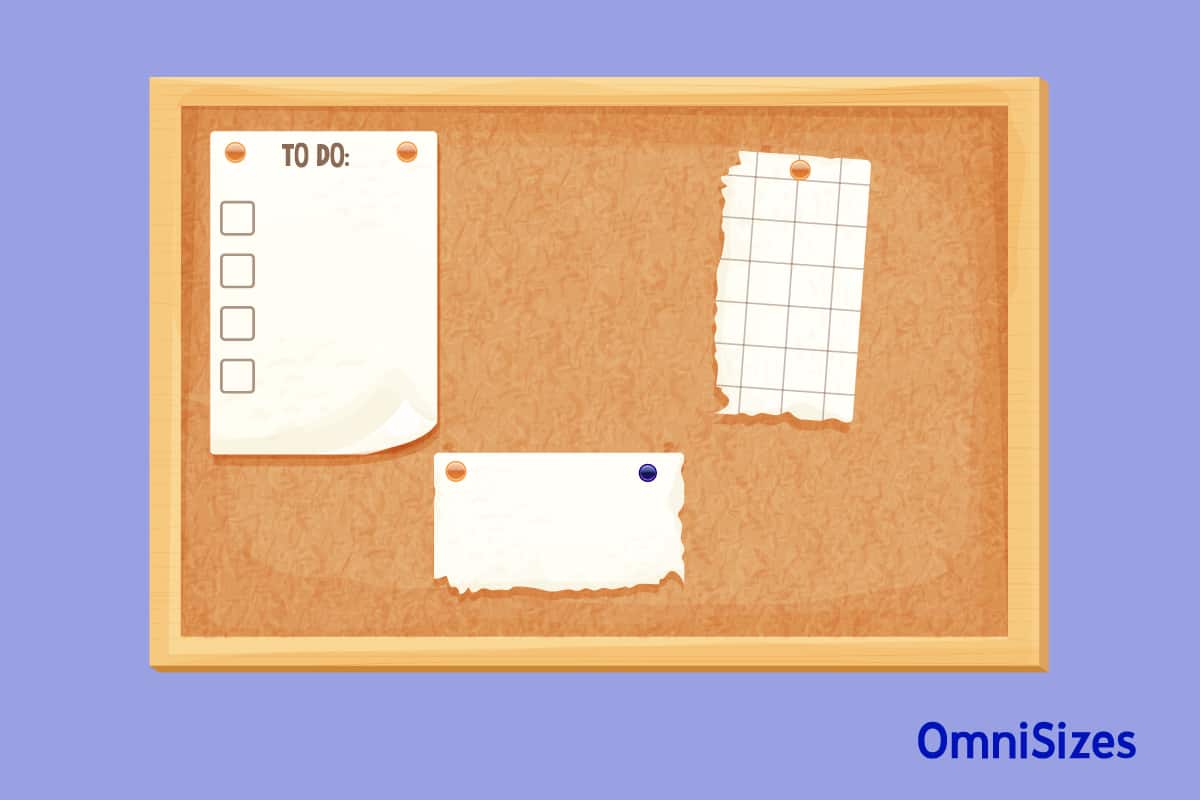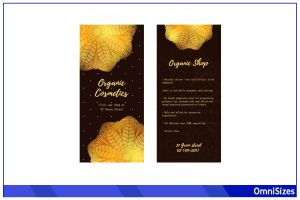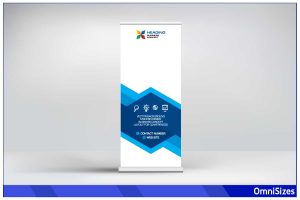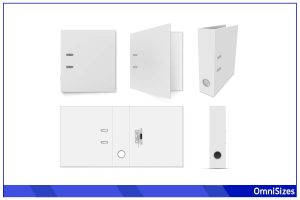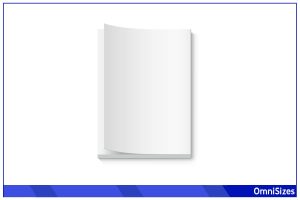Bulletin board sizes determine how information is displayed and perceived. Whether it’s in a classroom, office, or at home, the dimensions of a bulletin board can influence its functionality. A properly sized board ensures that all notices, photographs, or artworks are presented neatly without overcrowding or underutilizing the space.
Bulletin board sizes matter because they dictate the amount of content one can display. Too small, and you risk running out of space; too large, and your content might appear sparse. Typical sizes range from compact boards of 12 × 18 inches to larger ones measuring 48 × 72 inches or 30.5 × 46 centimeters to 122 × 183 centimeters, respectively.
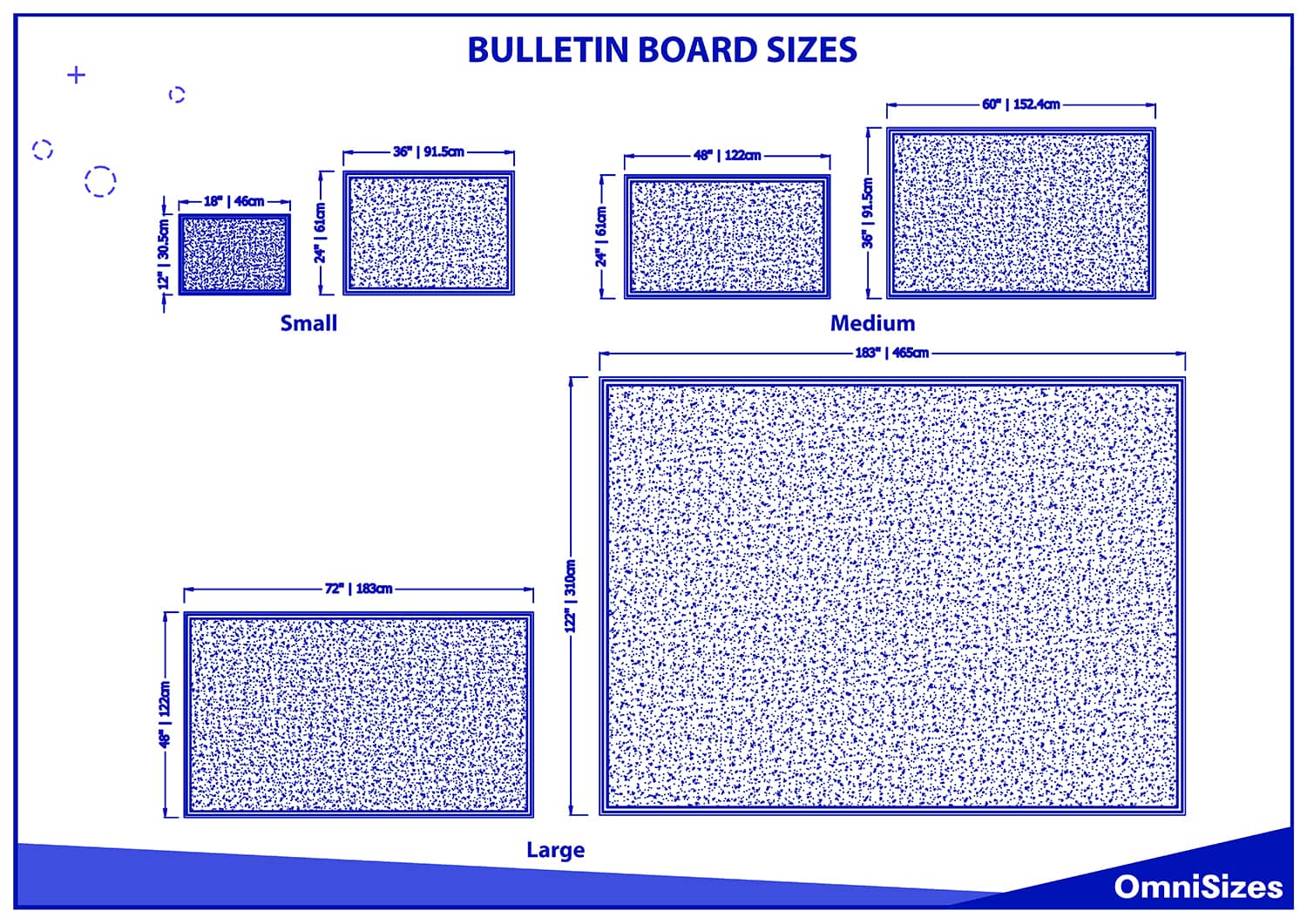
This guide will discuss different bulletin board dimensions, their applications, and tips for selecting the right size for your needs.
Basics of Bulletin Board Sizes
Bulletin boards have been a staple in offices, schools, and homes for decades. When choosing a bulletin board, you need to consider where it will be placed and what it will be used for.
How Bulletin Board Sizes are Determined
The size of a bulletin board is typically determined by its intended use. Here are some common factors:
- Purpose: Boards for classrooms or conference rooms might be larger to display more content, while those for personal spaces or cubicles are often smaller.
- Space Availability: The available wall space can limit or dictate the size of the board. It’s wise to measure the area before making a purchase.
- Content Volume: Think about the number of notices, photos, or other items you plan to pin. More content generally requires a larger board.
Significance of Bulletin Board Dimensions
Different environments call for specific bulletin board dimensions:
- Offices: In professional settings, medium to large boards are common. They accommodate memos, schedules, and announcements. Often, they’re placed in communal areas for easy visibility.
- Schools: Classrooms usually need large boards. They display student work, announcements, and lesson materials. Hallways might have smaller boards for notices or event posters.
- Homes: Bulletin boards in homes can range from small to medium, depending on the room. They’re great for pinning reminders, grocery lists, or family photos.
Small-Sized Bulletin Boards
Small-sized bulletin boards are versatile tools that fit effortlessly into compact spaces. Despite their size, they can effectively display essential notices, photos, or mementos.
Typical Dimensions and Use-Cases
The standard dimensions for small bulletin boards usually range between 12 × 18 inches and 24 × 36 inches or 30.5 × 46 centimeters to 61 × 91.5 centimeters. These sizes are ideal for:
- Workstations: A handy space to pin task lists, reminders, or quick reference notes right next to your desk.
- Kitchens: Excellent for grocery lists, recipes, or a calendar of family events.
- Kids’ Rooms: Children can pin their artwork, schedules, or pictures of friends.
Advantages of Compact Bulletin Boards
- Space-Saving: They don’t dominate a wall but provide enough pinning space for essential items.
- Portability: Light and easy to move, you can switch their location without much hassle.
- Aesthetic: Their size allows for creative displays without overwhelming a room’s decor.
- Affordability: Generally, smaller boards come at a more budget-friendly price compared to their larger counterparts.
- Versatility: Suitable for a variety of rooms and purposes, from displaying study notes in dorm rooms to showcasing postcards in living areas.
Medium-Sized Bulletin Boards
Medium-sized bulletin boards strike a balance between compactness and ample display space. Their design caters to a mix of personal and communal needs.
Standard Measurements
The dimensions for medium bulletin boards typically fall between 24 × 48 inches and 36 × 60 inches or 61 × 122 centimeters to 91.5 × 152.5 centimeters. These sizes are flexible for:
- Offices: Displaying departmental announcements, schedules, or team milestones.
- Home Offices: Organizing project outlines, deadlines, or vision boards.
- Community Centers: Posting event flyers, local news, or class schedules.
Benefits of Medium-Sized Bulletin Boards
- Versatile Display: They offer more pinning real estate than small boards, accommodating diverse content types.
- Shared Use: Perfect for environments where multiple people need access, like family households or team workspaces.
- Prominent Yet Unobtrusive: They are noticeable enough for easy content viewing but don’t monopolize wall space.
- Customizable: Many come with modular features, like cork and magnetic sections, or integrated shelving for added utility.
Large Bulletin Boards
Large bulletin boards serve as expansive canvases for information, perfect for places where visibility from a distance is a priority.
Common Dimensions for Spacious Settings
Large bulletin boards typically measure 48 × 72 inches and beyond or at least 122 × 183 centimeters. Given their size, they’re ideal for:
- Classrooms: Displaying teaching materials, student projects, or class schedules.
- Auditoriums: Highlighting event details, performer bios, or seating charts.
- Business Lobbies: Showcasing company achievements, news, or welcome messages.
Benefits of Large Bulletin Boards in Professional Settings
- High Visibility: Content can be seen clearly even from the back of a room, making it great for presentations or lectures.
- Organized Display: Ample space allows for categorized or segmented content, from monthly calendars to project phases.
- Community Engagement: In public spaces like libraries or community halls, they can house multiple notices without feeling cluttered.
- Durable Construction: Many large boards are designed to withstand frequent pinning and unpinning, making them long-lasting.
Best Practices for Selecting the Right Size
Choosing the ideal bulletin board size can make a significant difference in how effectively you convey information. Here’s how you can determine what bulletin board size you need:
1. Evaluating Your Space
Before purchasing, measure the area where the board will hang. Consider how much wall space you can dedicate to your bulletin board. In high-traffic areas, a larger board may be more noticeable and accessible.
2. Estimating the Volume of Content
Anticipate what you’ll pin to the board: If content changes often, you may need more space to accommodate new items. Boards for calendars or project timelines might need to be wider, while those for announcements can be more flexible in shape.
3. Considering Board Portability
Think about if you’ll move the board. Fixed boards can be larger and more robust, while portable ones might be lighter and more manageable in size. Check if the board comes with easy mounting and dismounting features.
